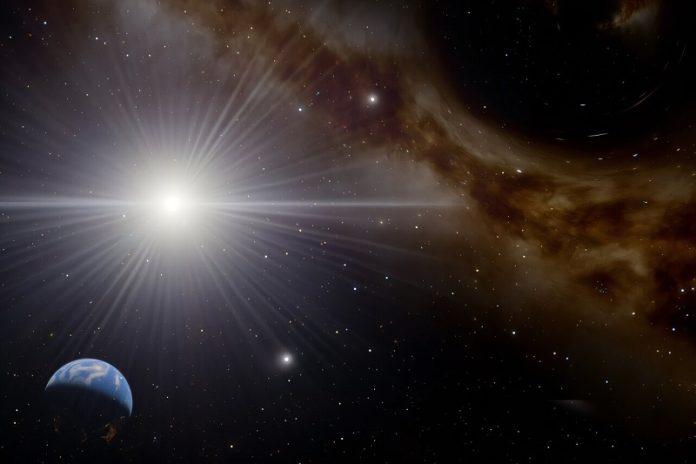
Scientists may have just found a clue to one of the universe’s biggest mysteries.
A new study from MIT suggests that the most powerful neutrino ever detected—the so-called “ghost particle” that barely interacts with anything—might have been created by the final explosion of a tiny black hole that formed just after the Big Bang.
Neutrinos are strange, nearly invisible particles that pass through almost everything.
Trillions of them stream through your body every second without leaving a trace.
But in February, researchers at KM3NeT, a huge neutrino detector buried deep under the Mediterranean Sea, reported something extraordinary: they had captured the signal of a neutrino carrying more energy than any ever recorded, more than 100 peta-electron volts.
To put that in perspective, this is far beyond anything humans can achieve in particle accelerators on Earth.
Where such an incredibly energetic particle came from has puzzled scientists.
Now MIT researchers Alexandra Klipfel and David Kaiser suggest it could be the dying breath of a primordial black hole—a tiny black hole born in the first moments after the Big Bang.
These ancient black holes are thought to be far smaller than the supermassive black holes that sit in the hearts of galaxies.
Some scientists even believe they could make up most of the universe’s dark matter, the invisible substance that outweighs all the stars and planets combined.
Primordial black holes would slowly shrink over time by releasing energy through a process called Hawking radiation, first predicted by Stephen Hawking. As they shrink, they get hotter, spewing out more and more energetic particles until, in their final instant, they explode in a burst of unimaginable power.
The MIT team calculated that if such black holes make up dark matter, then some of them should be reaching their explosive end even today, scattered across the Milky Way.
And if one of them happened to explode relatively near our solar system—about 2,000 times the distance between Earth and the sun—it could send out a flood of high-energy particles, including neutrinos. One of those neutrinos might have reached Earth and struck the KM3NeT detector.
This idea also helps explain another puzzle. At the IceCube Observatory in Antarctica, scientists have detected several neutrinos with unusually high energies, though not quite as extreme as the KM3NeT particle. On their own, those events didn’t add up. But if primordial black holes are exploding every so often, both IceCube and KM3NeT’s findings could suddenly make sense.
The MIT researchers estimate that there’s about an 8% chance of such an explosion happening close enough to Earth once every 14 years—low odds, but not impossible. And so far, no other theory explains both the IceCube and KM3NeT results as neatly as this one.
If true, the recent neutrino detection could mark the first observation of Hawking radiation and provide the strongest evidence yet that primordial black holes exist. That would not only help solve the mystery of high-energy neutrinos but could also reveal what dark matter really is—a question that has haunted science for decades.
For now, the theory is still unproven. Confirming it would require more detections of these ultra-rare neutrinos at “insanely high energies,” as the researchers put it. But if they’re right, we may have just caught the dying cry of one of the universe’s earliest black holes—an echo from the dawn of time itself.
Source: MIT.



